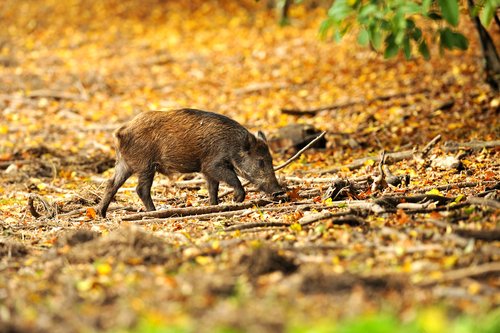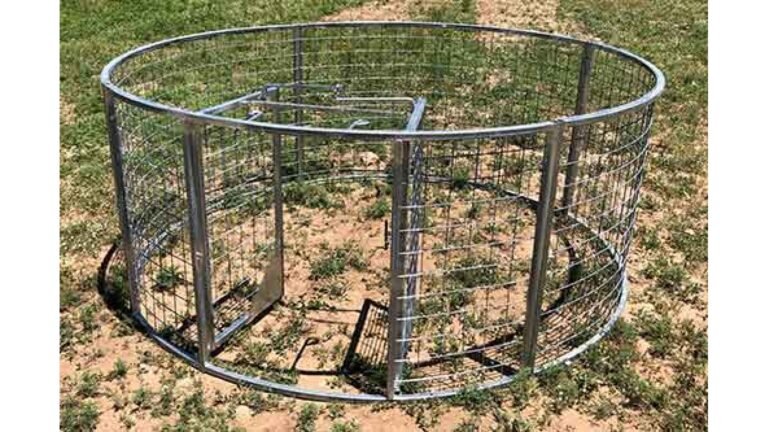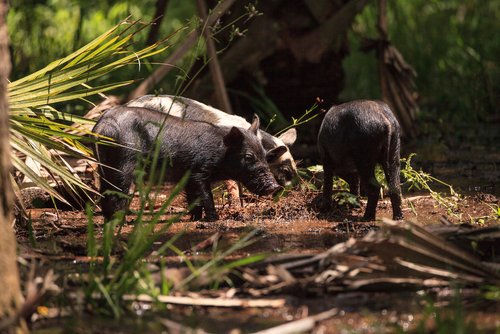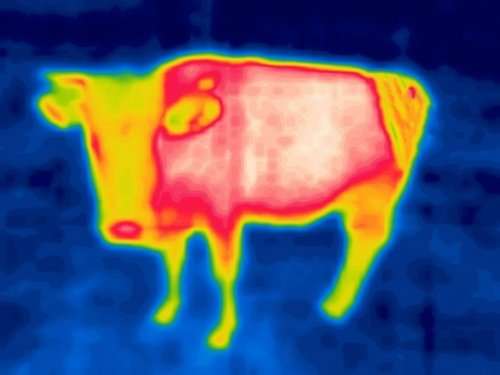Southwest Hog Hunting: What You Need to Know
Regarding hog hunting, the Southwest region of the United States offers an unparalleled experience for both seasoned hunters and beginners alike. With its vast and diverse landscapes, this part of the country is a hotbed for thrilling hunting adventures. Whether in Texas, Oklahoma, or even Arizona, you’ll find plenty of opportunities to pursue these elusive and challenging creatures. Read on for our Southwest Hog Hunting tips!
Overview of Hog Hunting in the Southwest Region
Hog hunting in the Southwest has gained tremendous popularity over the years due to several factors. The presence of feral hogs throughout this region has led to an increase in hunting opportunities as well as economic benefits for local communities. These wild boars, descendants of domesticated pigs brought by early European settlers, have thrived and multiplied, causing significant damage to crops and natural habitats.
Landowners and wildlife agencies have embraced hog hunting to manage these invasive species in response to their destructive behavior and rapidly increasing populations. This has opened up a world of exciting possibilities for hunters seeking thrilling adventures while contributing to conservation efforts.
Historical Background and Reasons for Hog Overpopulation
The history behind the overpopulation of hogs in the Southwest can be traced back several centuries. Spanish explorers introduced domesticated pigs during their exploration expeditions in the 16th century.
Over time, some pigs escaped or were left behind by settlers who moved on or perished during conflicts with Native American tribes. The favorable climate conditions, abundant food sources, lack of natural predators, and prolific breeding habits allowed these feral hogs to thrive in the Southwest’s varied ecosystems.
Today, their population numbers have soared exponentially. This poses significant ecological threats as they compete with native wildlife for resources while causing extensive damage to agricultural lands.
Overall, Southwest hog hunting presents a unique opportunity for hunters to participate in thrilling adventures while helping curb these destructive creatures’ population. Now that we have explored the overview of hog hunting in the region and delved into the historical background behind their overpopulation let’s dive deeper into understanding wild hogs and their impact on ecosystems and agriculture.
Understanding Wild Hogs
Characteristics and Behavior of Wild Hogs
When it comes to wild hogs, there’s no denying that they are fascinating creatures. Depending on age and breed, these hefty beasts can vary in size, ranging from 100 to over 400 pounds,
With their muscular frames, coarse hair, and prominent tusks, wild hogs command both respect and caution. Wild hogs are highly adaptable animals with a remarkable ability to survive in various habitats.
They possess a keen sense of smell that rivals even the most skilled bloodhound, allowing them to root out food sources hidden beneath layers of soil or foliage. Despite their somewhat lumbering appearance, these creatures are surprisingly agile and can run at impressive speeds when alarmed.
One interesting aspect of their behavior is the social structure within their groups known as sounders. These consist of one dominant boar (male), several sows (females), and their offspring called piglets.
Within the sounder, communication is key as they use vocalizations such as grunts and squeals to stay connected. The intelligence displayed by these animals makes them formidable opponents during hog hunts in Arizona or any Southwest hog hunting locations.
Impact of Wild Hogs on Ecosystems and Agriculture
While wild hogs may be captivating, their presence can harm ecosystems and agriculture. With no natural predators in many regions where they thrive, these hogs reproduce rapidly, leading to overpopulation issues.
Their voracious appetite makes them notorious for damaging crops such as cornfields or uprooting pastures while searching for roots and tubers. The ecological impact is also significant since wild hogs disrupt native plant communities through excessive rooting activity that disturbs the soil structure.
This leads to erosion problems while reducing vegetation cover for other wildlife species like deer or rabbits. Their feeding habits can also disrupt natural water sources and contribute to water pollution through excessive runoff.
In agriculture, wild hogs cause substantial economic losses for farmers and ranchers. They damage fences, destroy crops, and pose a threat to livestock.
Controlling their population becomes crucial not only for the protection of natural habitats but also for sustainable agriculture practices in Southwest hog hunting regions. Understanding the characteristics and behavior of wild hogs provides valuable insight into the challenges they pose to ecosystems and agriculture.
While they may be intriguing creatures with distinct social structures, their unchecked presence can have severe consequences. As we delve deeper into our exploration of Southwest hog hunting, it becomes clear that effective management strategies are necessary to address these issues head-on.
Popular Southwest Hog Hunting Destinations
Texas: The Hog Hunting Capital of the Southwest
Regarding hog hunting in the Southwest, there’s no denying that Texas takes the crown as the ultimate hog-hunting capital. With its vast expanses of land and high hog populations, Texas offers many hunting opportunities for locals and visitors alike. There are numerous hunting ranches and public lands in Texas where enthusiasts can embark on thrilling hog-hunting adventures.
One popular destination is the legendary Y.O. Ranch, located in the heart of Texas Hill Country. Spanning over 40,000 acres, this historic ranch offers excellent hog hunting and a unique experience with its luxurious accommodations and top-notch amenities.
From comfortable lodges to gourmet meals, hunters can indulge in a memorable stay while pursuing their passion for hog hunting. Another renowned destination is the Lyssy & Eckel Ranch, which has been around for over 100 years.
Situated near Pearsall, this working cattle ranch boasts diverse terrain that attracts hordes of wild hogs year-round. With experienced guides to assist hunters and rustic cabins for lodging, visitors can immerse themselves in an authentic Texan hog-hunting adventure.
Oklahoma: Rising Hotspot for Hog Hunting Enthusiasts
While Texas may be a hog-hunting capital, Oklahoma has become a hotspot for avid hunters seeking new adventures. This neighboring state offers an abundance of prime hog hunting locations that cater to enthusiasts from all walks of life.
One such location is the McCurtain County Wilderness Area in southeastern Oklahoma. Spanning across thousands of acres of dense forests and wetlands, this public land provides ample opportunities to encounter wild hogs roaming freely in their natural habitat.
With proper licensing requirements fulfilled, hunters can explore this scenic wilderness area while honing their hunting skills and enjoying the thrill of the chase. For those looking for a more tailored experience, Oklahoma is also home to various private hunting ranches specializing in hog hunting.
The Hog Wild Ranch, located near Antlers, Oklahoma, offers guided hunts on their expansive property. With detailed knowledge of hog patterns and behavior, their experienced guides ensure a high success rate for hunters.
Additionally, hunters can enjoy comfortable lodging options and facilities, including skinning sheds and walk-in coolers. Whether you choose Texas or Oklahoma for your hunting adventure, these Southwest hog hunting locations will provide an unforgettable experience filled with challenging hunts, breathtaking landscapes, and the opportunity to contribute to wildlife management efforts.

Equipment and Techniques for Successful Hog Hunting
Firearms, Bows, and Other Weapons Commonly Used in Hog Hunting
When it comes to hog hunting in the Southwest, choosing the right weapon is crucial. Firearms are the most popular choice among hunters due to their effective range and stopping power. A reliable semi-automatic rifle chambered in .223 or .308 is an excellent option for close to mid-range encounters.
These calibers offer a good balance between accuracy and terminal performance. If you prefer a more powerful punch, consider a bolt-action rifle chambered in .30-06 or larger calibers like .300 Win Mag or .338 Lapua.
However, some hunters prefer the challenge of getting up close and personal with hogs using archery equipment. Bowhunting can be highly rewarding but demands skill and precision.
For hog hunting, it’s recommended to use compound bows with a draw weight of at least 50 pounds for proper penetration on these tough-skinned animals. Broadheads designed for hog hunting with razor-sharp blades are also essential for quick kills.
Essential Gear for a Successful Hunt
Preparing for a successful Southwest hog hunt involves more than choosing the right weapon; you’ll need appropriate gear, too. First, consider the weather conditions in your hunting area, as they can vary greatly across different Southwest hog hunting locations like Arizona or Texas. Dressing appropriately with moisture-wicking base layers, insulating mid-layers, and waterproof outerwear will keep you comfortable during long days in the field.
Footwear is another critical aspect, as hog hunts may require traversing various terrains, including muddy swamps or rocky hillsides. Opt for sturdy boots with good ankle support that are waterproof yet breathable to ensure comfort and protection throughout your hunt.
In addition to clothing and footwear, there are several accessories you should have on hand for a successful hog hunt. These include a reliable hunting knife for field dressing, tracking, and processing hogs and a GPS device or compass to navigate unfamiliar territories.
Other useful tools might include hog calls or rattling devices to attract hogs, a quality flashlight for those night-time hunts, and game bags or coolers to preserve the meat properly. You’ll be well-prepared for an exciting and fruitful Southwest hog hunting adventure with the right equipment and gear in your arsenal.
Strategies to Track and Hunt Wild Hogs
Unveiling the Secrets of Hogs’ Hideouts
Tracking down wild hogs in the vast Southwest can be an exhilarating challenge for hunters. These elusive creatures are known for their keen senses and adaptable nature, making it crucial to employ effective tracking techniques.
One strategy is to locate the hogs’ feeding areas, wallows, or bedding sites. By studying their preferred habitats, such as dense brush or oak groves, hunters can increase their chances of encountering these wily creatures.
To identify hog feeding areas, keep an eye out for signs like rooted-up ground or disturbed vegetation where they have been searching for food. Additionally, wallows—muddy depressions created by hogs rolling in wet soil—can indicate their presence nearby.
Bedding sites are often found in thickets or under tree canopies where hogs seek shelter during rest periods. Hunters gain insight into hog behavior by understanding these patterns and paying attention to tracks and other signs like rubbed trees or droppings. They are better equipped to plan successful hunts.
Turning the Tables: Luring Hogs Within Range
Once you’ve located potential hog hotspots using effective tracking techniques, it’s time to consider methods that will entice them within shooting range. Baiting techniques have proven highly effective in attracting hogs while providing hunters a stationary target opportunity. Popular options include corn feeders and scent attractants specifically formulated for hogs.
Corn feeders strategically placed near known hog activity areas can lure them into the open during daylight hours when hunting conditions are optimal. The irresistible aroma of corn wafting through the air is a powerful magnet for these voracious eaters.
Scent attractants, available in various formulations such as acorn or apple flavors combined with strong aromas, can also be spread on the ground to draw hogs in. When using baiting techniques, ensuring compliance with local hunting regulations and obtaining necessary permits is essential.
For those seeking the thrill of nocturnal hunts, spotlighting or utilizing night vision technology adds an extra dimension to hog hunting. Spotlights or handheld lamps with red filters help illuminate hogs without startling them.
Alternatively, night vision scopes or thermal imaging devices provide a distinct advantage by allowing hunters to see in darkness, making it easier to locate and target hogs even when they are most active. With these effective strategies in your arsenal, you’ll be well on your way to tracking down and successfully hunting wild hogs in Southwest hog-hunting locations like Texas and Oklahoma.
Patience and perseverance are key, as these intelligent creatures can quickly adapt their behaviors to avoid detection. So gear up, hone your tracking skills, and prepare for the thrilling adventure in the untamed Southwest wilderness!
Conservation Efforts & Management Practices
Impact of hog overpopulation on native wildlife species
Wild hogs, known for their aggressive nature and voracious appetite, harm native wildlife species in the Southwest region. As these invasive creatures multiply rapidly, they compete with indigenous animals for limited food resources and habitat. Native species like deer, turkeys, and small game are particularly affected by the presence of wild hogs.
The excessive rooting and wallowing behavior of hogs results in the destruction of vegetation and sensitive ecosystems. Their relentless search for food often leads to overgrazing, causing damage to fragile environments and hindering natural regeneration.
Moreover, hogs can prey upon eggs or young offspring of ground-nesting birds or reptiles, disrupting their reproductive cycles. The unchecked proliferation of wild hogs threatens the delicate balance that sustains Southwest ecosystems.

Conclusion
Southwest hog hunting offers both an exhilarating adventure and an opportunity to address the issue of hog overpopulation. By participating in regulated hunting activities, hunters contribute to conserving native wildlife species and protecting delicate ecosystems from the adverse effects caused by wild hogs. We can strike a balance between preserving biodiversity while enjoying the thrill of hog hunting through responsible management practices such as monitoring population density, implementing controlled hunts, and supporting conservation initiatives that focus on habitat restoration efforts.
So grab your gear, explore the diverse Southwest hog hunting locations like Texas or Oklahoma (or even consider venturing into Arizona), and engage in this exciting pursuit while contributing to wildlife conservation efforts. Always follow local regulations and ethical guidelines to ensure sustainable hog-hunting practices for generations!




